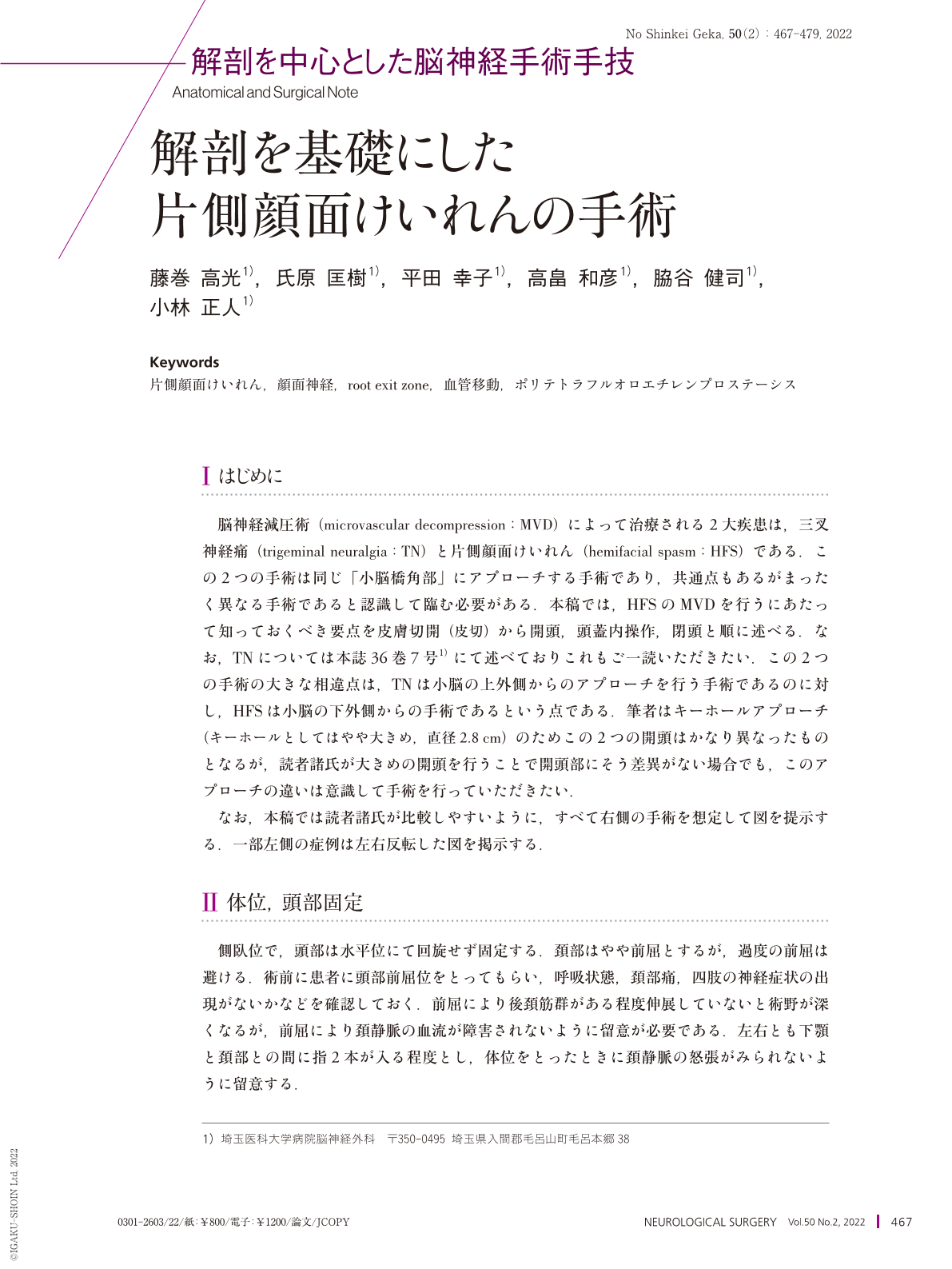Japanese
English
- 有料閲覧
- Abstract 文献概要
- 1ページ目 Look Inside
- 参考文献 Reference
Ⅰ はじめに
脳神経減圧術(microvascular decompression:MVD)によって治療される2大疾患は,三叉神経痛(trigeminal neuralgia:TN)と片側顔面けいれん(hemifacial spasm:HFS)である.この2つの手術は同じ「小脳橋角部」にアプローチする手術であり,共通点もあるがまったく異なる手術であると認識して臨む必要がある.本稿では,HFSのMVDを行うにあたって知っておくべき要点を皮膚切開(皮切)から開頭,頭蓋内操作,閉頭と順に述べる.なお,TNについては本誌36巻7号1)にて述べておりこれもご一読いただきたい.この2つの手術の大きな相違点は,TNは小脳の上外側からのアプローチを行う手術であるのに対し,HFSは小脳の下外側からの手術であるという点である.筆者はキーホールアプローチ(キーホールとしてはやや大きめ,直径2.8 cm)のためこの2つの開頭はかなり異なったものとなるが,読者諸氏が大きめの開頭を行うことで開頭部にそう差異がない場合でも,このアプローチの違いは意識して手術を行っていただきたい.
なお,本稿では読者諸氏が比較しやすいように,すべて右側の手術を想定して図を提示する.一部左側の症例は左右反転した図を掲示する.
This article describes the anatomical approach and operative points of microvascular decompression for hemifacial spasm based on the author's personal experience with 1,000 cases. As vascular compression of the facial nerve is often quite caudal, it is necessary to ensure that the compressing arteries in this area are moved. Neither the vessels nor the prosthesis used to move them should not touch the root exit zone of the nerve(vascular transposition nerve isolation technique). It should also be emphasized that every effort should be made to avoid complications such as hearing impairment and postoperative subcutaneous spinal fluid accumulation.

Copyright © 2022, Igaku-Shoin Ltd. All rights reserved.


